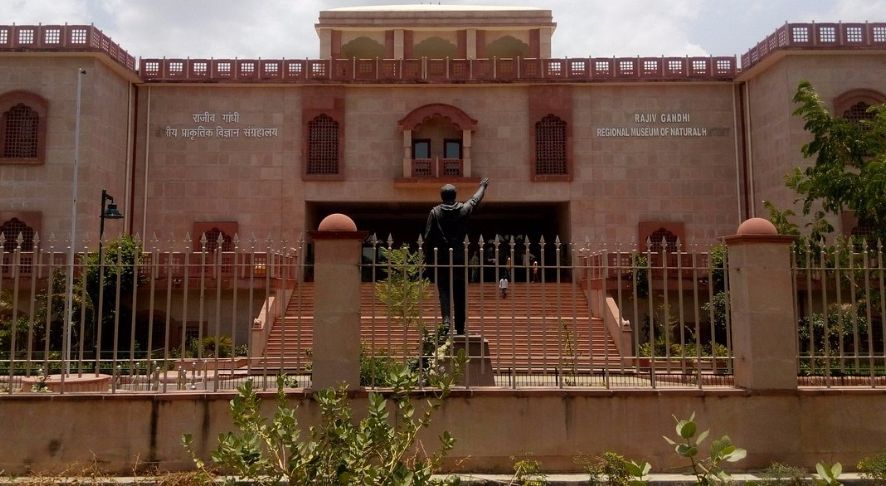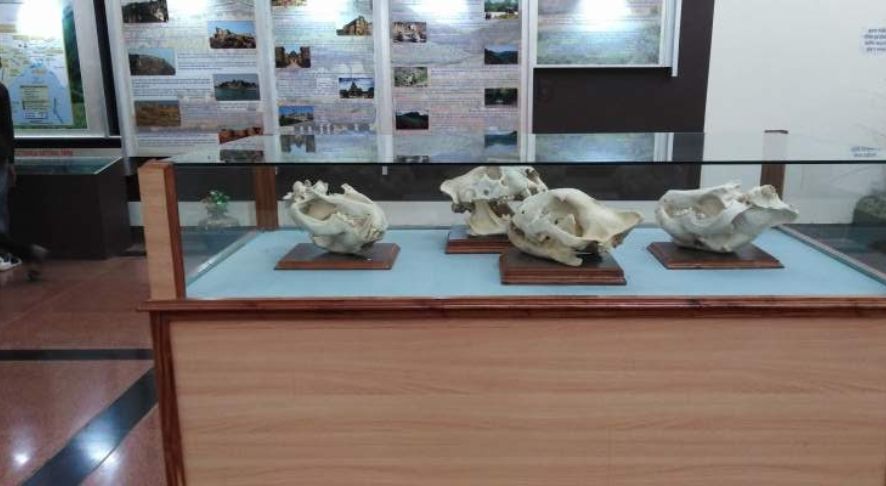
Rajiv Gandhi Regional Museum of Natural History
Set in Ramsinghpura near Sawai Madhopur, Rajasthan, the Rajiv Gandhi Regional Museum of Natural History highlights the biodiversity and important ecology of western India. The government started the museum in 2007 and opened it to the public in 2014. It covers 7.2 acres of land and displays local plants, animals, geological features, and cultural heritage. The ministry is responsible for the Centre, using it for awareness and as an educational hub.
Table of Contents
ToggleHistory of the Museum

The government built the Rajiv Gandhi Regional Museum of Natural History in Sawai Madhopur, Rajasthan, to increase environmental knowledge and highlight the natural heritage of western India. It was on December 23, 2007, that then Vice President Hamid Ansari laid the first stone for the Museum. Several years of progress ended with the museum being inaugurated by Finance Minister Namo Narayan Meena on March 1, 2014.
It spreads over 7.2 acres of land in Ramsinghpura village of Sawai Madhopur, it is the fourth regional natural history museum in India after Mysore, Bhubaneswar, and Bhopal Museum. The Ministry of Environment, Forests and Climate Change runs the museum, and it aims to help people learn about nature and resources by exploring exhibits and educational events.
Explore the Wild: Best Tourist Spots in Sawai Madhopur for 2025
Galleries and Exhibits Of Rajiv Gandhi Regional Museum

This Museum was divided into several sections and floors, each part describing the Natural History of India:
- Ground Floor (Biodiversity of Rajasthan): The Ground Floor Gallery of the Museum shows Rajasthan’s desert wildlife, Flora, and tribal life. Visitors will see future exhibitions inform them more about climate change, endangered species, and India’s ecological diversity with visual elements.
- First Floor (Forest Ecosystem of India): The various types of Indian forests mentioned here are tropical, deciduous, evergreen and mangrove. The exhibits explain how to care for forests, use plants for medicine, and understand the diversity and sustainability of ecosystems.
- Second Floor (under development): Even now under construction, the second floor will contain areas for marine ecosystems, wetlands, and the Himalayan rich biodiversity. Future exhibitions showcase environmental topics: climate change, endangered species and India’s diversity of ecological zones with visual display.
- Special Exhibits and Installations: Some temporary exhibitions are about wildlife photography, tribal art, and efforts to protect wildlife. The rotating exhibits mean new ideas for engaging visitors and interesting educational displays for children, teens, and adults.
Don’t Miss This: Ultimate Ranthambore Safari Guide & Tiger Tracking Tips
Tips for Visitors
Acknowledge yourself at your fullest with the mentioned tips, as these help explore the museum:
- Bring your camera with you for free of cost entry to capture alluring exhibits.
- Wear comfortable shoes because you need to walk for 1-2 hours to explore.
- Give sight to the display boards to learn more about the museum.
- Well-sanitary washrooms and hygienic drinking water are available inside the museum.
- Free parking is available at the museum.
- Plan your visit accordingly, as the museum remains closed on Mondays.
While You’re Here: Ranthambore Fort Entry Tips, History & Best Views
Best Time to Visit Rajiv Gandhi Regional Museum
From October to March, the vibrant weather with an unforgettable visit to the Rajiv Gandhi Regional Museum of Natural History. It is not recommended to visit there when it’s extremely hot outside. Going to a museum early in the morning or during evening hours is a great way to have a calm visit.
Timings of the Museum
Rajiv Gandhi Regional Museum of Natural History is open daily from 10:00 AM until 5:00 PM, except on Mondays and days when national holidays occur, in which case it stays closed.
From Forts to Bazaars: See Why Jaipur Is a Must-Visit in 2025
How to Reach Rajiv Gandhi Regional Museum
This historical museum is in Ramsinghpura village of Sawa Madhopur, approximately 9km from the main city. You can get there with every transportation due to its good connectivity from major cities:
- By Flight: There is a Jaipur International Airport about 180 kilometers from the city. Visitors can then get to Sawai Madhopur by taxi or train in about four hours.
- By Train: A direct train connection exists between Sawai Madhopur Railway Station and Delhi, Jaipur, and Mumbai. The museum is a short distance away from the station; you can easily go by car or cab.
- By Bus: The city of Sawai Madhopur is reachable by car on National Highway 552. Luxury and commuter buses, taxis, and private vehicles ensure an enjoyable and visually attractive road trip to the town.
Frequently Asked Questions
1. What is the Rajiv Gandhi Regional Museum of Natural History known for?
Ans: It showcases biodiversity, ecology, and cultural heritage of western India.
2. What are the opening hours of the Rajiv Gandhi Regional Museum of Natural History?
Ans: It’s open from 10 AM to 5 PM, closed on Mondays and national holidays.
3. Is there an entry fee for the Rajiv Gandhi Regional Museum of Natural History?
Ans: No, entry is free for all visitors.
4. Is photography allowed inside the Rajiv Gandhi Regional Museum?
Ans: Yes, you can take photographs, but some areas may restrict the use of flash.
5. Are food and drinks allowed inside the museum?
Ans: No, food and drinks are not permitted inside the exhibit areas.
